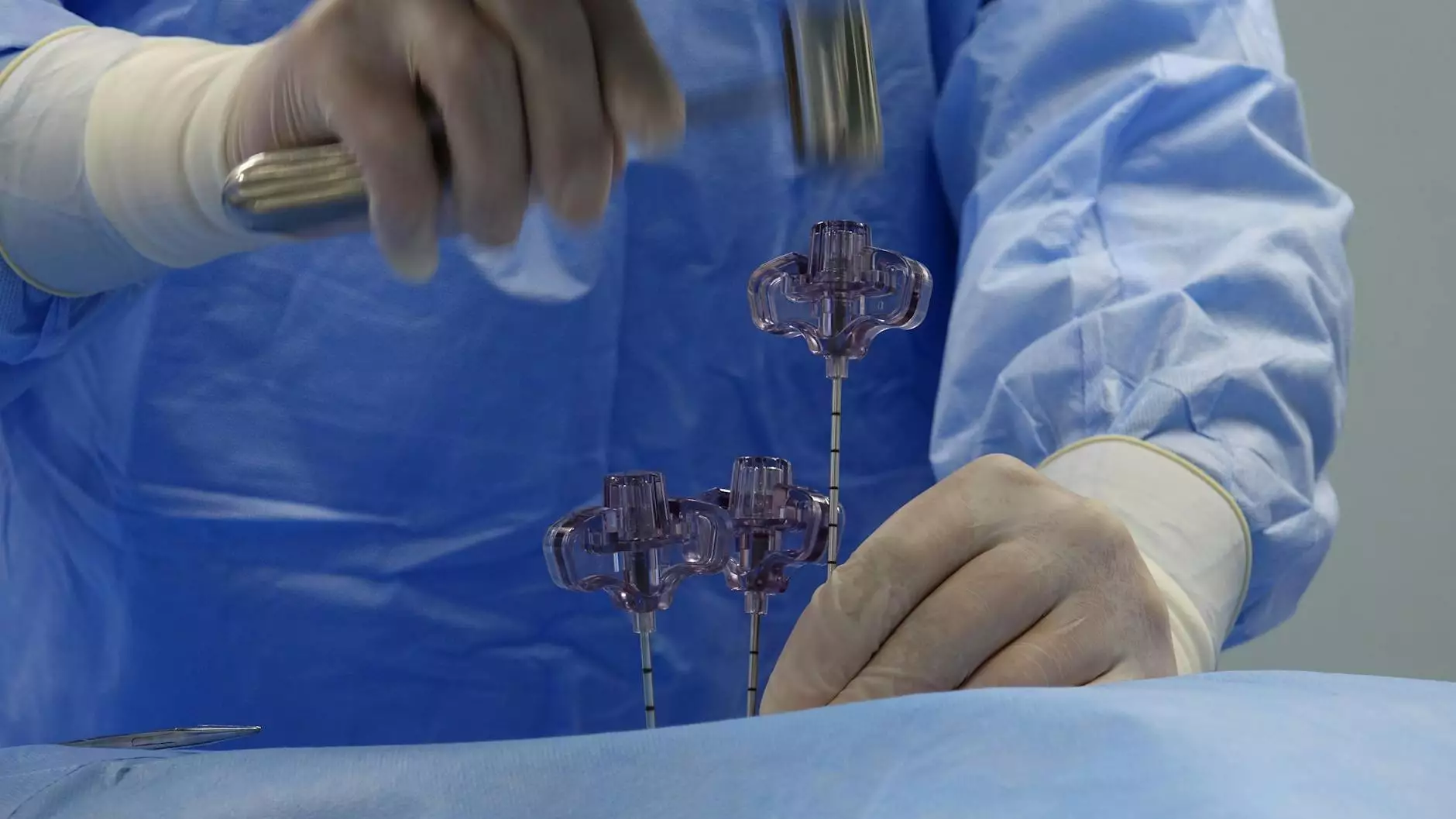Laparoscopic Excision Surgery for Endometriosis: A Comprehensive Guide

Endometriosis is a complex and often debilitating condition that affects millions of women worldwide. It occurs when tissue similar to the lining inside the uterus grows outside the uterus, leading to pain, infertility, and various other complications. One of the most effective treatments for endometriosis is laparoscopic excision surgery. This article will guide you through the nuances of this surgical approach, including its benefits, processes, and recovery methods.
What is Laparoscopic Excision Surgery?
Laparoscopic excision surgery, often referred to simply as laparoscopic surgery, is a minimally invasive surgical technique used to remove endometrial tissue growing outside the uterus. This surgery is performed through small incisions in the abdomen, using a camera and specialized instruments. Unlike traditional open surgery, laparoscopic procedures typically result in less pain, shorter recovery times, and minimal scarring.
Why Choose Laparoscopic Excision Surgery for Endometriosis?
Choosing laparoscopic excision surgery for endometriosis offers several distinct advantages:
- Minimally Invasive: The small incisions made during the procedure result in less trauma to the body.
- Reduced Pain: Patients often report less postoperative pain compared to traditional surgery.
- Faster Recovery: Many women return to their daily activities within days rather than weeks.
- Improved Accuracy: Surgeons can visualize the pelvic cavity in high definition, allowing for precise removal of endometrial tissue.
- Less Scarring: The small incisions lead to minimal scarring, which is aesthetically beneficial.
The Laparoscopic Excision Surgery Process
The process of laparoscopic excision surgery typically involves several key steps:
1. Preoperative Assessment
Before the surgery, patients undergo a thorough evaluation, including a physical examination, medical history review, and imaging tests such as ultrasound or MRI. This assessment helps determine the extent of endometriosis and prepares both the patient and the surgical team for the procedure.
2. Anesthesia
On the day of the surgery, patients are administered general anesthesia to ensure comfort throughout the procedure.
3. Instrumentation
The surgeon makes several small incisions in the abdomen, often around the belly button and lower abdomen. A laparoscope (a thin tube with a camera) is inserted through one of the incisions, allowing the surgeon to view the pelvic organs on a monitor in real time.
4. Excision of Endometrial Tissue
Using the laparoscope and specialized instruments, the surgeon carefully excises the endometrial tissue. This process is critical, as thorough removal of all endometrial implants can significantly alleviate symptoms and reduce the likelihood of recurrence.
5. Closure
After the excision is complete, the instruments are removed, and the incisions are closed using sutures or adhesive strips. The entire procedure typically lasts 1 to 3 hours, depending on the extent of the endometriosis and the complexity of the case.
Who is a Candidate for Laparoscopic Excision Surgery?
While laparoscopic excision surgery is a leading treatment for endometriosis, not every patient may be an ideal candidate. Candidates typically include:
- Women diagnosed with endometriosis causing significant pain or complications.
- Those who have not found relief through other treatment methods such as medication.
- Patients interested in preserving fertility.
- Individuals with moderate to severe endometriosis as per imaging studies.
Benefits of Laparoscopic Excision Surgery
Laparoscopic excision surgery for endometriosis presents numerous benefits that can improve patients' quality of life:
- Pain Relief: Many women experience dramatic reductions in pelvic pain following surgery.
- Enhanced Quality of Life: Reduced pain can lead to improvements in daily activities, relationships, and emotional well-being.
- Improved Fertility Outcomes: For those facing infertility due to endometriosis, surgical excision can enhance the chances of conception.
- Lower Rates of Recurrence: Excision is more effective in removing endometrial tissue compared to ablation, helping to prolong the interval before symptoms return.
Recovery from Laparoscopic Excision Surgery
Recovery from laparoscopic excision surgery typically involves:
- Hospital Stay: Many patients can go home the same day, while some may require a brief overnight stay.
- Postoperative Care: Following instructions regarding pain management, activity limits, and wound care is crucial for healing.
- Follow-Up Appointments: Patients usually have follow-up appointments to monitor recovery and address any concerns.
- Activity Resumption: Most women can return to normal activities within a few days, gradually resuming more strenuous activities as they heal.
Potential Risks and Considerations
As with any surgical procedure, laparoscopic excision surgery carries risks. While serious complications are rare, potential risks include:
- Infection: As with any surgery, there's a risk of infection at the incision sites.
- Bleeding: There is a possibility of excessive bleeding during or after the procedure.
- Organ Damage: Although rare, surrounding organs may be inadvertently damaged during surgery.
- Recurrence: Endometriosis can recur, and some women may experience symptoms again in the future.
Why Choose Dr. Seckin for Laparoscopic Excision Surgery?
Dr. Seckin is recognized for his expertise in treating endometriosis, particularly through laparoscopic excision surgery. His approach combines advanced surgical techniques with a compassionate care model tailored to each patient’s needs. Here are some reasons to consider Dr. Seckin:
- Experience: With years of experience and a specialized focus on endometriosis, Dr. Seckin has performed numerous successful laparoscopic surgeries.
- Patient-Centric Approach: He emphasizes a thorough evaluation and discusses all treatment options, ensuring patients feel informed and supported.
- Comprehensive Care: Dr. Seckin provides integrated support, including pre-operative counseling and post-operative follow-up, enhancing recovery and outcomes.
Conclusion
Laparoscopic excision surgery for endometriosis represents a transformative opportunity for women suffering from the physical and emotional burdens of this condition. With advancements in surgical techniques, patients can experience significant relief and improve their quality of life. If you're considering surgery for endometriosis, consulting with a qualified expert like Dr. Seckin can help guide you on your path to recovery and well-being.
Contact Dr. Seckin's office today to learn more about how laparoscopic excision surgery could be the solution you've been searching for!
laparoscopic excision surgery endometriosis








